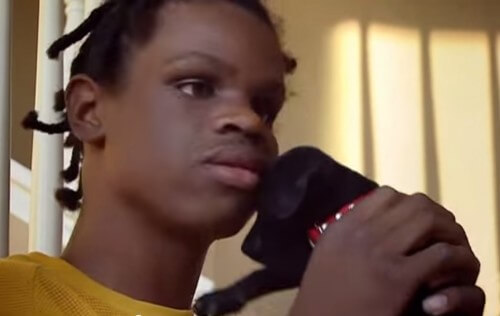Ben Underwood from California found his way through echolocation, that is, with the help of a sonar, like the bats

By: Dafna Haim-Langford
Everyday tasks such as finding food, avoiding obstacles and reaching those closest to us can become huge challenges if we try to do them in the dark. Several species of bats, on the other hand, perform these tasks and even consist of them as a matter of routine, despite the fact that they sometimes perform them in total darkness.
Bats are able to navigate their way using a technique called echolocation, orientation using sound, even in bat species that can reach a speed of 40 km/h. Echolocation is actually a biological sonar: the animal transmits sound signals at a rate of 20-200 signals per second, and by calculating the sound return time from various objects, the animal is able to create a spatial image of the environment for itself.
Underwood Ben from California, was the only known person who is also, unusually, able to find his way through echolocation: ride a bike, play basketball and perform a variety of other complex activities as seen in the following video:
https://www.youtube.com/watch?v=AiBeLoB6CKE
Until scientists crack the way to teach other visually impaired people to find their way around using echolocation, a walking stick for the blind based on sound signals has been developed in the UK, inspired by the mechanism studied in bats. In 2002, a multicenter study began with a model of a walking stick for the blind based on echolocation. The cane was developed by a British company and tested by blind and partially sighted people in England, Australia, USA and more.
The stick transmits sound signals, calculates the signal return time, and by means of vibration buttons on the handle warns of obstacles that are located about 2-4 meters in the direction of movement and at a height of 1.6 meters, in order to warn of objects that are at head level.
In 2012, the developer company, Sound Foresight Technology Ltd, launched its first product, the UltraCane and soon after, the company developed and launched the UltraBike. The UltraBike is a mount, which is worn on the handlebars of the bicycle and warns of obstacles that are about 8 meters with the direction of travel and about 5 degrees to each side. At this stage, the mount does not allow the sighted to ride completely independently, but only as part of a riding group of sighted and blind people together.
Source of knowledge
More of the topic in Hayadan:

4 תגובות
You're right, the movie was uploaded to YouTube in 2012, so it confused me.
Anyway, for that matter his ability to pinpoint the location of obstacles using echo was important. By the way, according to Wikipedia, he died of the same cancer that caused his eyes to be removed in his childhood, and not because of anything related to his phenomenal ability to move. Therefore, I changed the reference to him to the past tense.
my father
Unfortunately he did pass away in 2009. You can write his name in English on Google and verify.
Anonymous, don't just throw nonsense. The documentary is from 2013,
He passed away in 2009